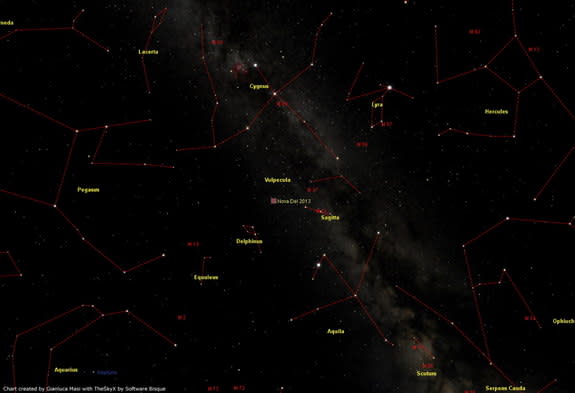 Science and Weather
Science and WeatherAmateur astronomer spots star brightening into nova explosion

Discovered on Wednesday in the northern constellation of Delphinus, a tiny white dwarf star that was previously unseen has brightened visibly into a nova explosion.
This nova, called Nova Delphinus 2013, was first seen by an amateur astronomer in Yamagata, Japan named Koichi Itagaki, and it has been followed by the Slooh telescopes on the Canary Islands, off the west coast of Africa. The Slooh Space Camera astronomers showed the explosion during one of their broadcasts:
[ More Geekquinox: Newly-discovered pulsar unravels mystery of monster black hole’s strange diet ]
Nova explosions are some of the most spectacular events that happen in our galaxy. The brightest nova seen so far in the past 100 years was Nova Aquilae 1918, which reached a magnitude of -1.4, just shy of the brightest star in the night sky (Sirius). With Nova Delphinus 2013 continuing to brighten even now, I look forward to seeing just how bright it gets.
The constellation Delphinus is a small one, framed by the constellations Aquarius, Pegasus, Cygnus and Aquila, and is currently visible all night long. The nova should be visible with a telescope or with binoculars at the moment, if you have good dark-sky conditions.
Geek out with the latest in science and weather.
Follow @ygeekquinox on Twitter!


